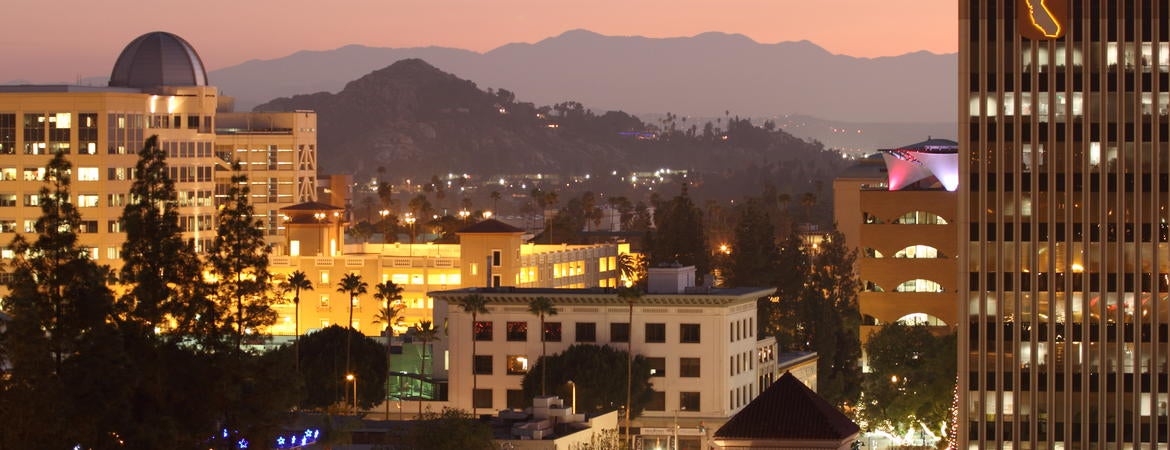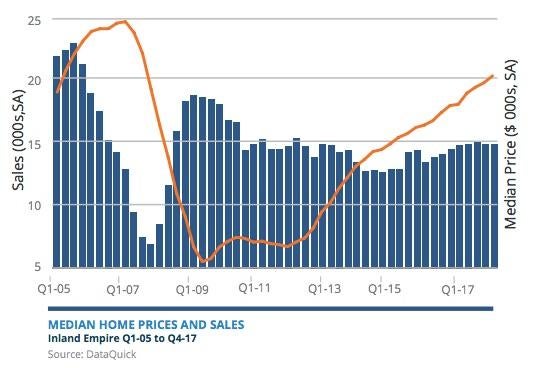
The remainder of 2018 is shaping up to be a period of relatively robust economic growth in the Inland Empire where home prices, employment, and consumer and business spending are all experiencing sizable gains, according to an analysis released today by the UC Riverside School of Business Center for Economic Forecasting and Development.
Some of the strongest growth has been in the local housing market, where the median price for a single-family home ballooned by 9 percent year-over-year as of the fourth quarter of 2017 (the latest data available). This is the fastest home price growth among Southern California’s major metropolitan areas including San Diego County (7.8 percent), Los Angeles County (6.6 percent), and Orange County (6.4 percent), and a faster rate of growth than in the state as a whole (8.7 percent).
Limited inventory and comparatively brisk population growth are leading to vigorous demand for housing and driving up home prices, according to the analysis.
“The Inland Empire’s relative affordability has made it one of the fastest-growing regions in California, but like most of the state’s metro areas, supply has not kept up with demand and the the number of available homes on the market is lower than we would expect at this point in the cycle,” said Robert Kleinhenz, executive director of research at the Center for Economic Forecasting. “While the local construction sector took some time to respond, both building permits and employment have increased in the last two years, making real estate development one of the strongest current drivers of the regional economy.”
Additional Key Findings
- Rent in the Inland Empire has grown at a more moderate pace than home prices, rising by 2.7 percent and reaching $1,300/month as of the fourth quarter of 2017. This is a lower rate of growth than in Los Angeles (5.5 percent) or Orange (3.9 percent) Counties, but in line with San Diego County (2.7 percent).
- The Inland Empire’s labor markets continue to outperform the state and surrounding regions. Led by the construction sector, nonfarm employment rose 3.7 percent from January 2017 to January 2018, the second-fastest rate of growth among the state’s Metropolitan Statistical Areas (MSAs), behind only Stockton.
- The average annual wage in the Inland Empire rose by 1.7 percent as of the third quarter of 2017 (the latest data available), although the region continues to struggle with comparatively low wages. In the latest numbers, white-collar related industries saw wage growth, while the region’s largest industries, including education/health and transport/warehouse experienced stagnant or declining wages.
- Recent economic growth has led to a boost in consumer spending as taxable sales in the region grew 5.8 percent from the fourth quarter of 2017 to the fourth quarter of 2018, outpacing neighboring Los Angeles County (1.3 percent).
- Across all of the Inland Empire’s commercial real estate sectors, rents and building permit values are rising, while vacancy rates are falling. In 2017, total nonresidential building permit values increased by 43.8 percent.
The new Inland Empire Regional Intelligence Report examines employment, consumer and business spending, as well as residential and commercial real estate. Please view the complete analysis hereThe UC Riverside School of Business Center for Economic Forecasting and Development is the first major university forecasting center in Inland Southern California. The Center is dedicated to economic forecasting and policy research focused on the region, state, and nation. Learn more at https://ucreconomicforecast.org.




